
One of the most enduring design trends ever conceived has got to be the industrial kitchen. The reason for its perennial popularity? The industrial look is transitional, which means it’s not completely traditional, nor ultra-modern, but somewhere comfortably between.
Industrial kitchen ideas are just so flexible and can be dialled up or down according to the style and age of your property. The industrial look can be combined with a whole host of different kitchen ideas. It can work just as well as part of a cottage kitchen with Shaker cabinets, as it does in an urban loft apartment with handle-free units.
The most successful industrial styling deliberately fosters a slightly rugged, imperfect edge, and features materials and fittings that you could imagine have been ripped out of an old factory or warehouse. ‘The appeal of this imperfection lies in the way it promotes a relaxed atmosphere. Nobody is worried about spills or stains and a few extra scuffs will just add a little more character,’ says interior designer Dean Keyworth.
Industrial kitchen ideas
Industrial kitchen ideas are always in vogue with their rich mix of materials and mid-century charm. But with so many ways to approach this look, we’ve turned to the experts to find out the best ways to embrace industrial styling in your cooking space.
Pick and mix their suggestions according to taste, but don’t rush the process. The best industrial kitchens feature layers of character and interest built up over the years.
1. Add DIY details
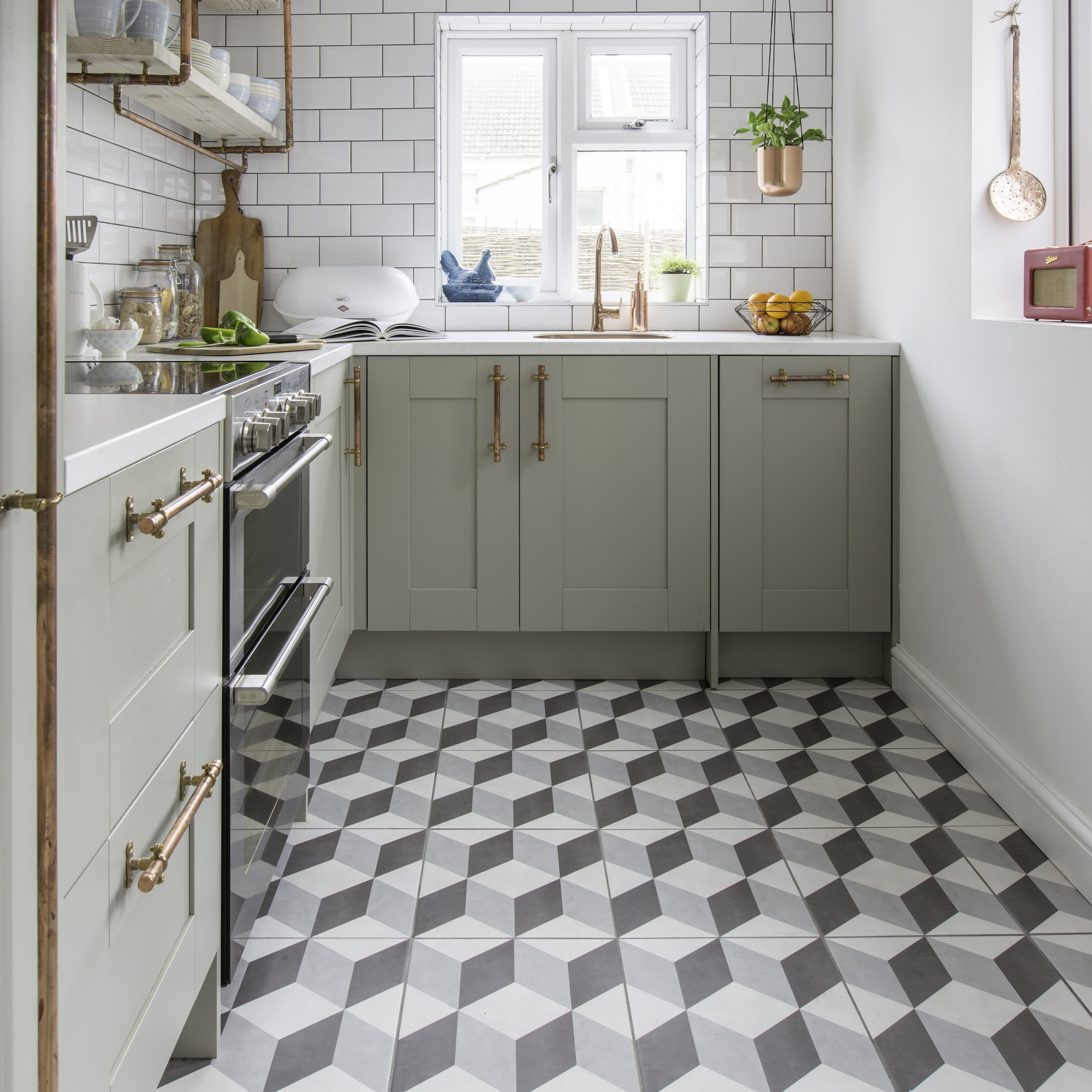
DIY details are spot on for the industrial look, and, as perfection is not desirable, you don’t have to be overly skilled on the tools. Interior stylist Maxine Brady is a huge fan of incorporating her own industrial details, and one of her favourite (and most ‘liked’) DIY updates is the copper handles in her own Brighton kitchen.
Inspired by the industrial details in a local coffee shop, Maxine used basic plumber’s pipe from Screwfix to fashion her own copper cabinet handles and they seriously elevate her small kitchen ideas.
‘Even though my kitchen is off-the-peg, I think these copper handles make it look way more expensive than it actually was. I love the way they have injected a subtle industrial edge to my kitchen,’ she enthuses.
2. Uncover ducting
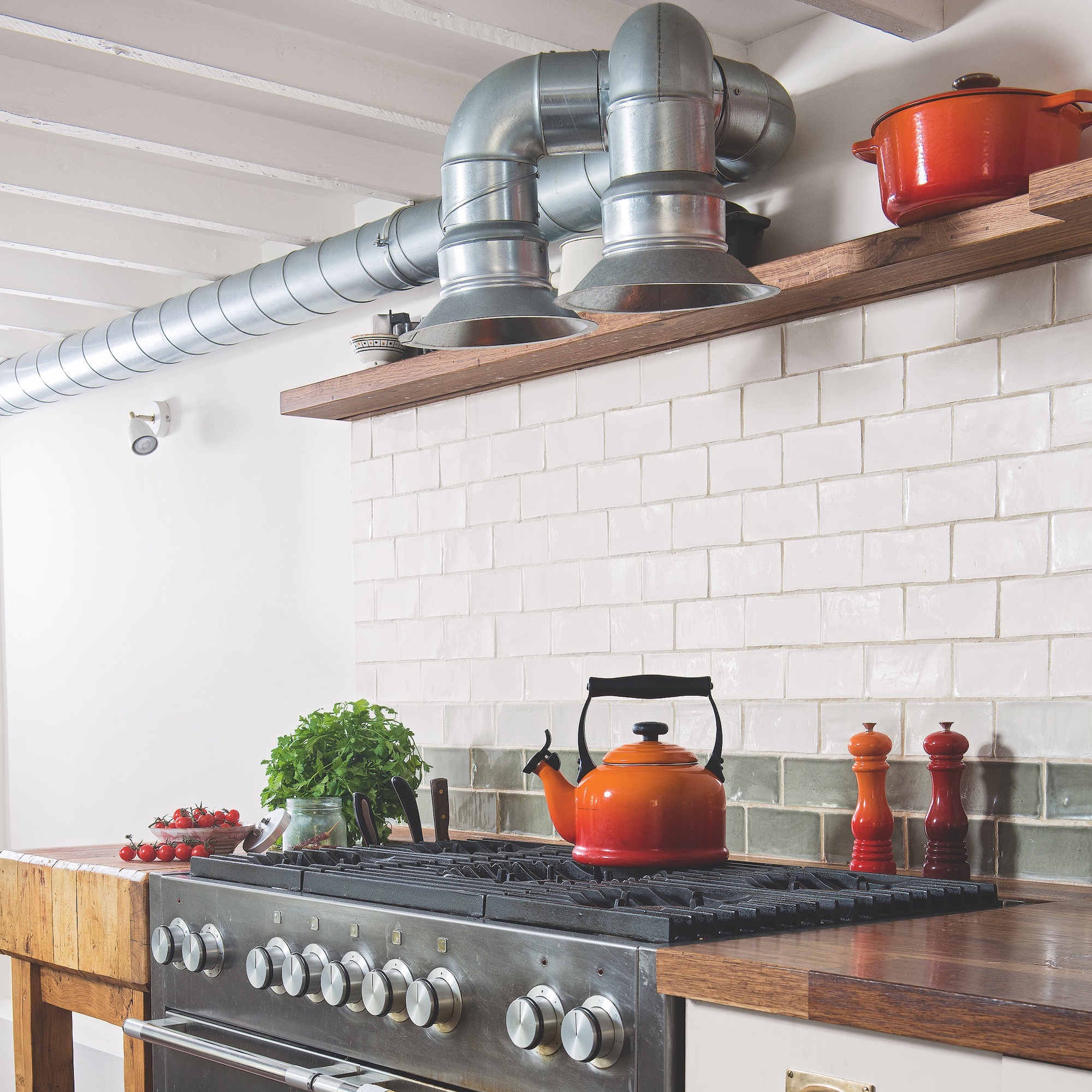
Exposed ducting, just like you’d expect to see in a busy factory (or nightclub!), is just the ticket for recreating an industrial atmosphere. And, as you won’t need to box in your extractor pipework, it’s another option that can help keep your reno budget in check, too. ‘Leaving your cooker hood ducting exposed is an effective way to add a touch of rugged stainless steel overhead. Fit the pipework back against the wall using utilitarian brackets and bolts to prevent the ducting from overpowering the space,’ says interior stylist, Maxine Brady.
Install a motor on the outside wall to create your own, inexpensive extraction system, or connect exposed ducting to a regular cooker hood, in stainless steel of course. Set between beams, exposed ducting can also prove an effective way to open up the space between rafters, creating more visible height.
3. Dress it up
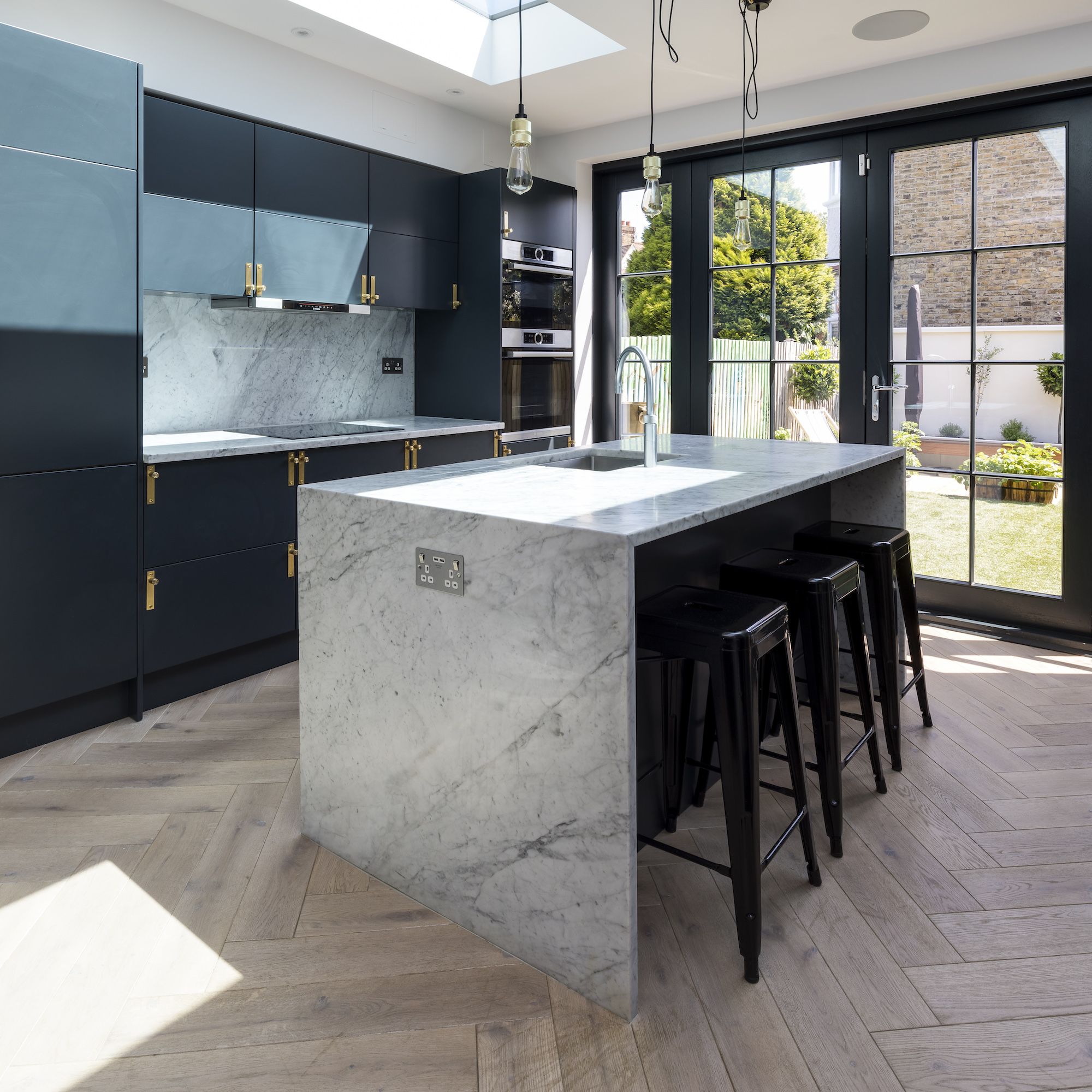
Industrial-inspired accessories are a great way to style up a modern kitchen says award-winning interior designer, Sandra Flashman. Take it in a more sophisticated direction by choosing crisp silhouettes and mid-century designer pieces, like these iconic Tolix metal bar stools.
‘For this kitchen, diamond-cut Buster and Punch hardware were paired with classic black Tolix stools and machined metal lamp shades, which all work together to give the overall space a refined industrial look,’ explains Sandra.
4. Source vintage lighting

Vintage lighting, fitted with bulbs that cast a warm glow, is a great way to make industrial-style interiors still feel cosy through your kitchen lighting ideas. You can source original factory lighting that’s been updated to meet modern regulations – try Skinflint – or ‘get the look’ with new fittings from industrial lighting specialists like Industville.
‘For an authentic industrial aesthetic look for pendant lights with raw finishes in materials like brass or pewter. Wire cages, Edison-style lamps, retro twisted flex and spun metal shades are all typical industrial style lighting design cues,’ says Mara Rypacek Miller, Managing Director, Industville.
5. Select steel appliances

If there’s one material that nails the industrial look perfectly, it has got to be stainless steel. Happily, this makes sourcing appliances for an industrial-style kitchen super easy! ‘Stainless steel is an excellent option for industrial style kitchens,’ agrees Zimbini Nkonjera, Cooking Category Manager at Indesit. ‘Offering durability, resistance to corrosion, a sleek modern appearance and easy maintenance, stainless steel is a popular choice for hobs, hoods, ovens, fridge-freezers and even dishwashers.’
Fingerprints can be a common issue with stainless steel, especially in homes with young children. If you think they’ll drive you mad, opt for a matt aluminium finish that has a similar industrial look but won’t show sticky finger marks quite as clearly. ‘Routine cleaning helps prevent the build-up of bacteria while preserving the quality of the stainless steel, we’d recommend using a specialised cleaner specifically designed for stainless steel ensuring an easy clean that doesn’t leave any unwanted marks,’ adds Zimbini.
6. Embrace the architecture

The industrial trend first emerged in the late ‘90s when it became popular to convert old factories and abandoned warehouses into cool loft apartments. Many of the original architectural features were left exposed – we’re talking weathered beams, structural RSJs, rustic brickwork and concrete – and this raw, pared-back architectural approach still lies at the heart of the industrial aesthetic today.
Having been lucky enough to work on several warehouse conversions around London’s Docklands, interior designer Dean Keyworth has long held a soft spot for a really architectural-led industrial look. ‘I think it works particularly well for kitchens as the clean lines and hardy materials, such as steel supports and exposed brick, make a practical as well as stylish environment in which to cook,’ he enthuses.
‘Free-standing kitchen units and range cookers work particularly well in this situation, as leaving a little space between things shows off the industrial textures and scale of the architecture,’ adds Dean. ‘One practical word of warning, bare bricks are very porous, so seal them well and use a steel or glass splashback behind the cooktop to avoid greasy marks.’
7. Choose living finishes
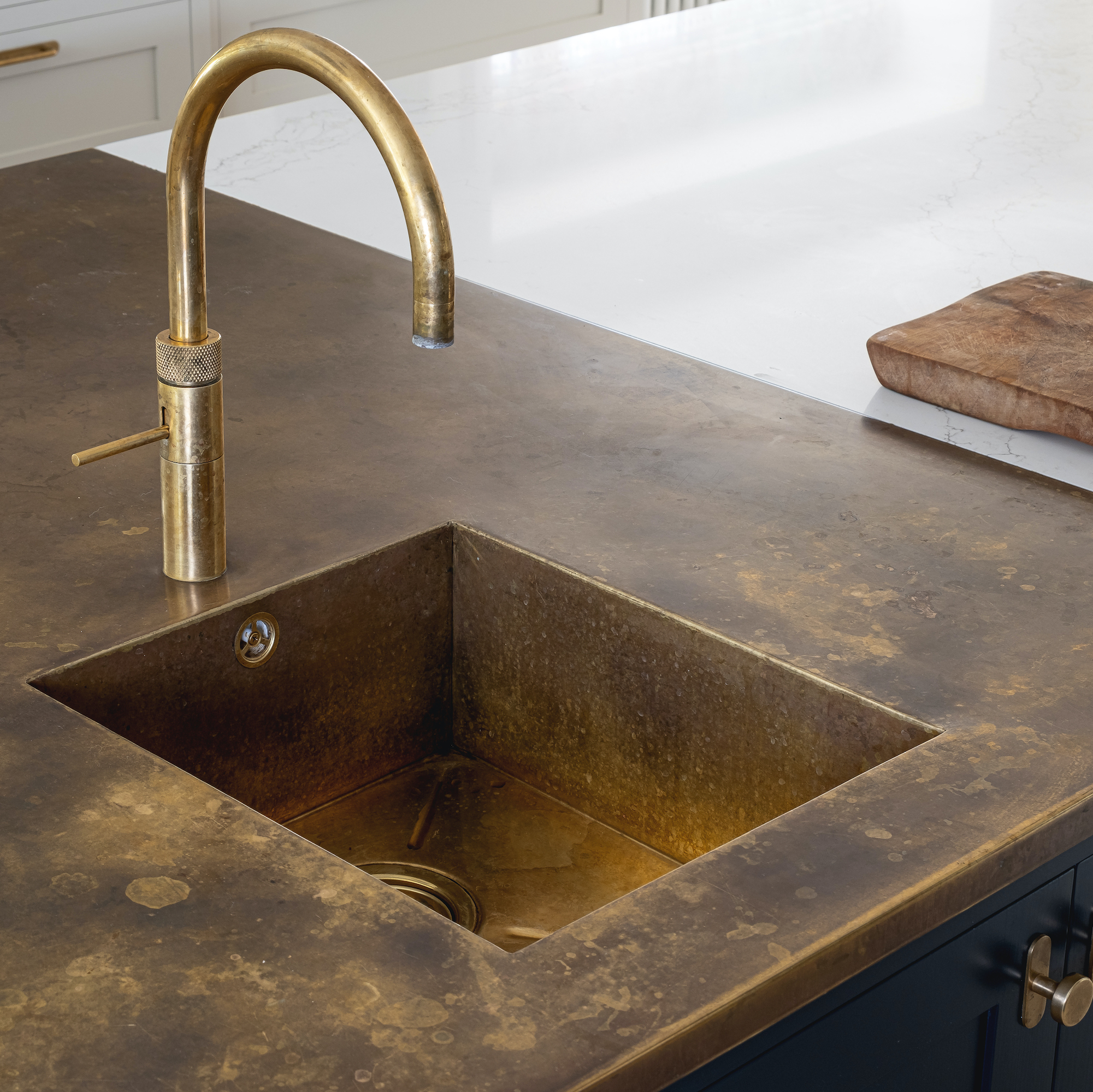
Industrial kitchens often feature weathered, time-worn surfaces to recreate that factory salvage charm. The trend for ‘living finishes’, which are essentially unlacquered metals that are left to oxidise and patina in time and use, is ideal. Brass, copper and zinc are all now readily available on sinks, taps and cabinet hardware, as well as for kitchen worktop ideas and splashbacks.
To fast-track warm metallics from new and shiny to old and rugged, opt for a hand-aged finish, whereby chemicals are used to speed up the patination process. ‘Brass, copper and zinc are all must-have materials for a modern industrial look and we love the interesting patina and warmth they can bring to a kitchen,’ says kitchen designer, Chris Spink of Hush Kitchens.
‘We especially like using brass to form sinks and worktops, as they’re extremely hardwearing and boast antimicrobial properties. The best advice is to only use water to clean living finishes, and they will continue to get more beautiful as time passes.’
8. Reclaim and upcycle
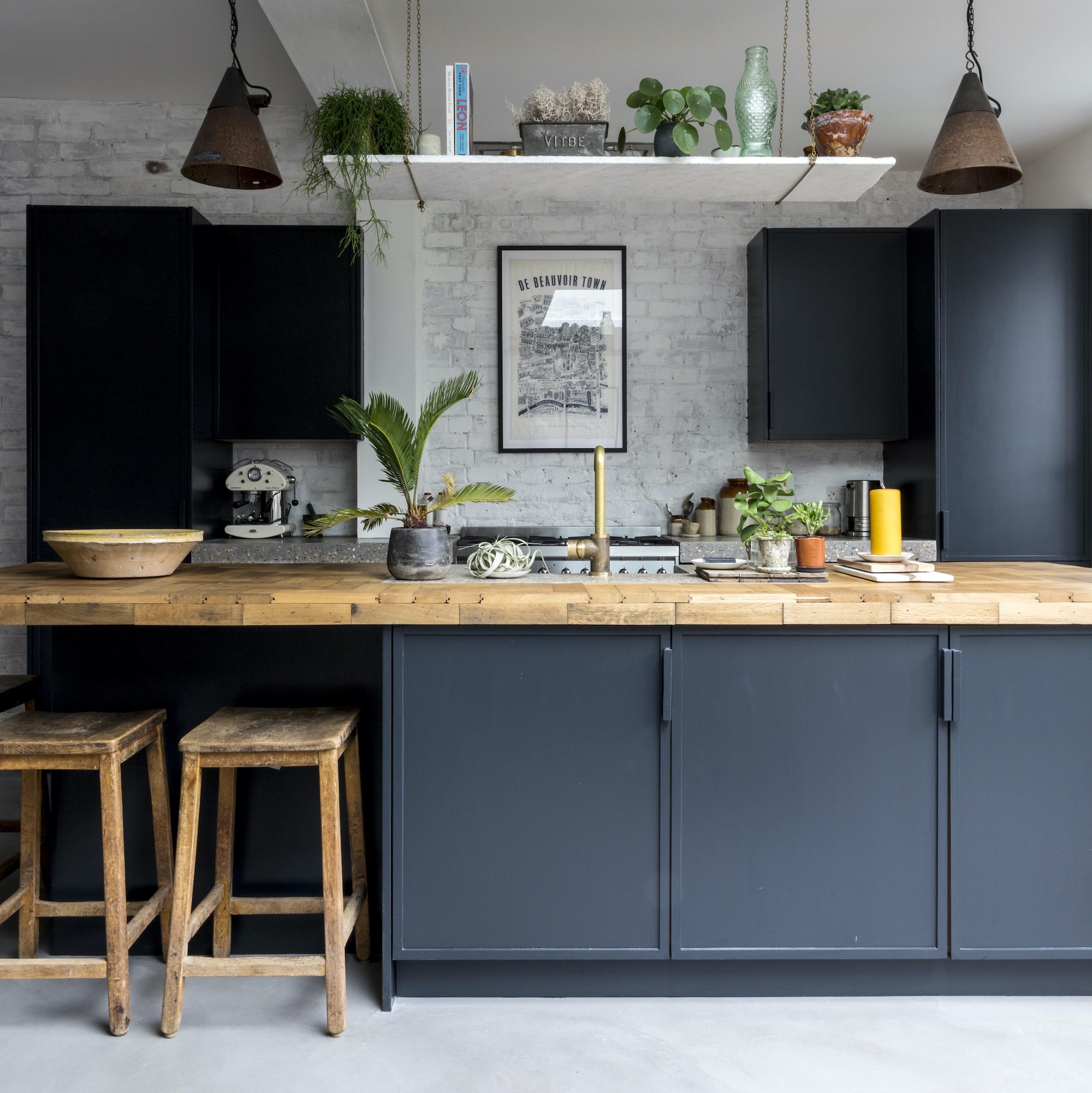
Salvage-hunting for vintage kitchen ideas and fittings that have long withstood the tests of time is how professional designers bring character and personality into their kitchens. Upcycling and reusing vintage materials is a sustainable practice, too.
Admittedly it’s not always a quick win, but it can be a lot of fun and the results rarely disappoint, as Stephen Nash discovered when renovating his own kitchen. The creative director of All & Nxthing made worktops and shelving from oak parquet flooring salvaged from an old ballroom, which works as a textural counterpoint to the modern concrete flooring below.
‘It was hard work to get all the old Bitumen off and re-lay them, but it was so worth it,’ recalls Stephen. ‘The character it brings is outstanding; better than anything you could achieve with new. For practical reasons, we added a section of terrazzo around the sink, using stones taken from the property’s garden.’
9. Opt for open shelving

A fully-fitted kitchen is far too rigid and structured for the relaxed industrial aesthetic, so switch wall cabinets for open shelving to provide a break from cabinetry and create a more laidback, ‘non-kitcheny’ look. Source shelf brackets made from cast iron or stainless steel, and shelving in timber or metal to tap into the industrial trend.
The results should be chilled-out, not chaotic. ‘Try to organise and style your shelves by grouping your items into clusters of threes or odd numbers and add different heights and sizes in each cluster. This will help give your shelves some balance and help keep them looking tidy, not chaotic,’ advises interior designer Enass Mahmoud.
10. Work in black accents
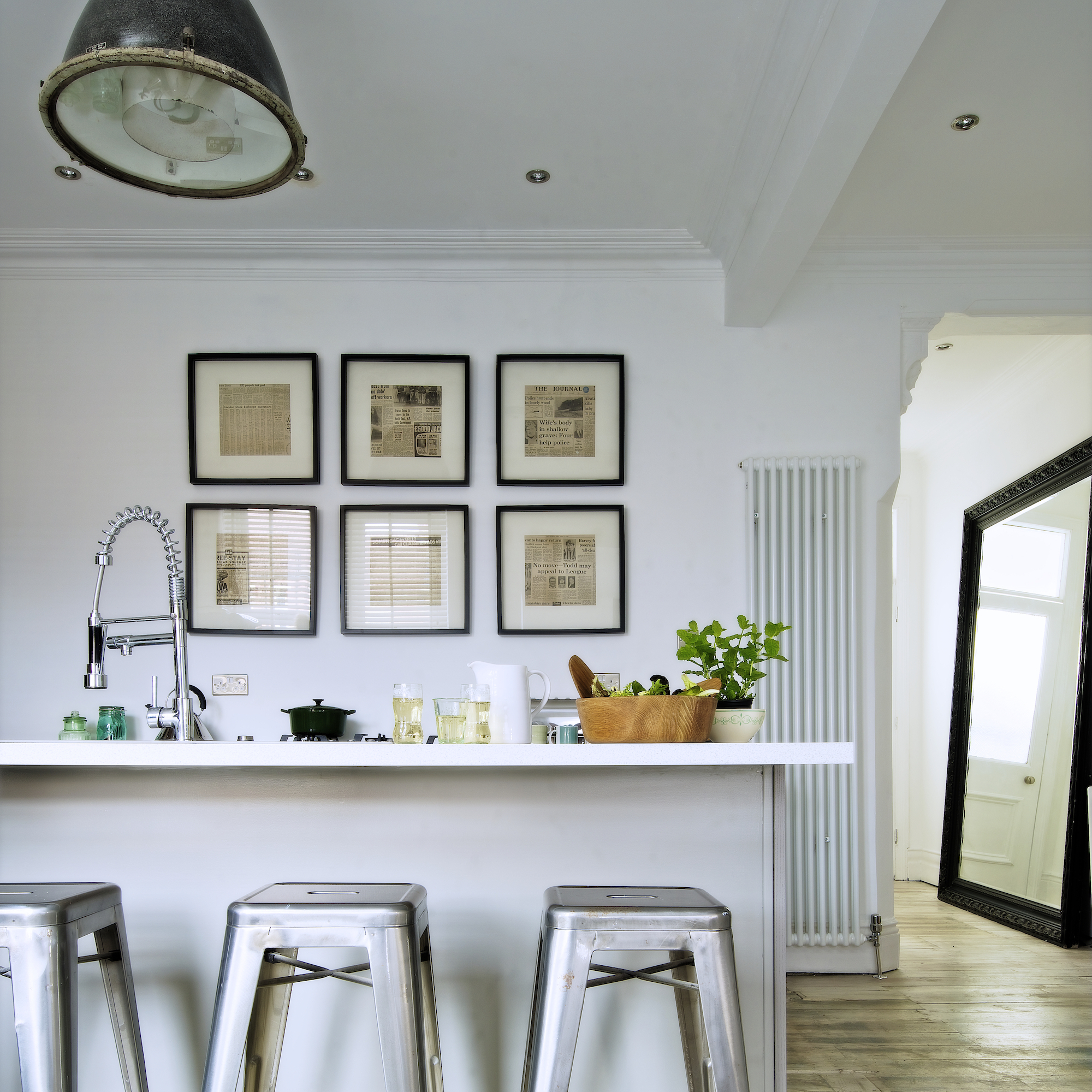
It only takes a few thoughtfully chosen black accents to lend a gentle industrial edge to any kitchen. Glazed pantry or cabinet doors with crisp Crittall-style metal frames are good examples, but it can be far subtler (and more affordable), than that.
‘Here, the black vintage pendant brings a crafted industrial look to an otherwise neutral kitchen. Paired with the galvanised steel finish on the Tolix chairs and some black framed artwork, it brings the space to life,’ explains interior designer, Sandra Flashman.
FAQs
How do you soften an industrial kitchen?
The most obvious way to soften any kitchen is by introducing soft furnishings and textiles. These will also have a dampening effect on the room’s acoustics, which can help stop the echo of hard surfaces. A vintage runner or sisal rug, roman blinds or curtains and upholstered seating will all provide visual, and literal, softness to an industrial kitchen.
Try to select fabrics that complement the industrial look; geometric prints, ikat and stripes work well, or go for plain coloured rough-hewn materials like grain-sack or washed linen for extra texture. Rustic or reclaimed timbers and natural stone can also provide much-needed character that will off-set the coldness of metals and concrete in an industrial-focused kitchen.
What defines an industrial kitchen?
Often associated with cavernous loft apartments, converted from abandoned warehouses, the industrial kitchen tends to be open-plan. It features exposed architectural moments and a utilitarian air that focuses on raw materials that have been battered by time, and thus steeped in heritage,’ says interior designer, Dean Keyworth.
The industrial look is more modern than some kitchen aesthetics, and you’ll typically see lots of sleek stainless steel, polished concrete and architectural lighting but it’s not a minimalist style of kitchen. There’s character and atmosphere, and plenty of imperfections, all of which make the industrial kitchen feel cosy, liveable and enduringly popular.







